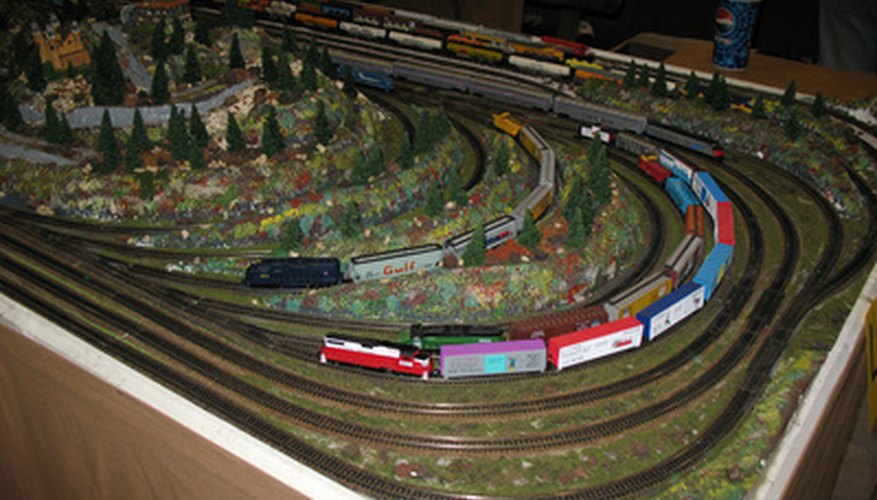When you're building a model, you want it to be as close to the real device as you can get, but sometimes you need to add a little something to the kit in order to get it the rest of the way there. LED lights, for example, can make a car or train closer to perfection by mimicking lights on the real machines. How you add these lights may differ from model to model, but the theory is important to understand.
Examine your model to determine how many LEDs you want, and where you are going to attach the LEDs, battery, switch and resistor. You can mark these with tape or a marker.
- When you're building a model, you want it to be as close to the real device as you can get, but sometimes you need to add a little something to the kit in order to get it the rest of the way there.
- Examine your model to determine how many LEDs you want, and where you are going to attach the LEDs, battery, switch and resistor.
Calculate the voltage needed in the resistor. The 9V battery puts out 9 volts, but the LEDs you're using may only need between 1.5 and 3.4 volts. For example, if you have a 1.5V LED and a 3.4V LED, there is still 4.1V not accounted for, so you would need a resistor that removes 4.1V from the circuit. Add up the LED voltages, and subtract the battery voltage to determine how much voltage you need your resistor to remove.
Calculate the needed resistance in Ohms. Resistors are measured in Ohms and not volts. Ohms are calculated as Volts over Amps. A standard value for amps is 20 miliamps, but you can build in some error by using 15. Some sites recommend 10 ma for white, blue or exotic-coloured LEDs. So, 4.1 volts / 15 ma (or .015 Amps) equals 274 Ohms.
- Calculate the needed resistance in Ohms.
- A standard value for amps is 20 miliamps, but you can build in some error by using 15.
Wire an LED to the battery pad, connect the red wire to the longer of the two leads on the LED. Use electrical tape or solder to connect the wires. If you have multiple LEDs, connect the shorter lead of one to the longer lead of the next.
Attach the resistor to the shorter lead of the final LED, using electrical tape or solder. Resistors typically have two bulbs, one of which has a stripe on it--use the blank end.
Connect the switch to the end of the striped end of the resistor. Wire the other end of the switch back to the battery pad.
Test the circuit by attaching the battery to the pad, then flipping the switch. If the LEDs don't switch on, check your connections.
- Attach the resistor to the shorter lead of the final LED, using electrical tape or solder.
- Test the circuit by attaching the battery to the pad, then flipping the switch.
Tape or hot glue the circuit into the model. Start by placing the LEDs, then the battery and switch. You don't need to glue the resistor down.
TIP
LED stands for Light Emitting Diode. If you have more LEDs than the 9V battery can power, they will produce low light. You can wire a second battery into the circuit to add more power, but you still need a resistor to take up the excess voltage.
WARNING
If you don't use a resistor, or a sufficient resistor, you can burn out the LED bulbs even faster, or possibly cause the battery to overheat and leak. Overheated batteries can, on rare occasions, explode. Do not use a circuit with insufficient resistance, and never create a short circuit: looping a battery to itself.
